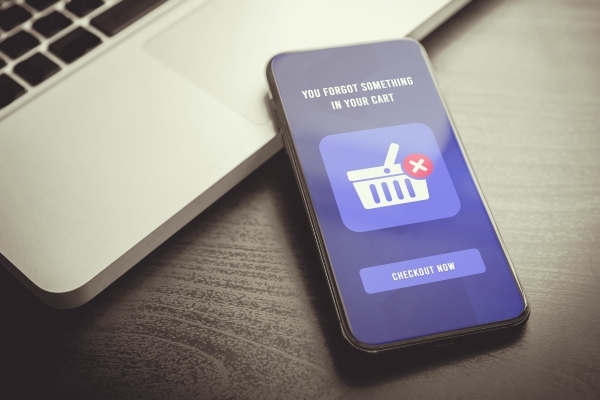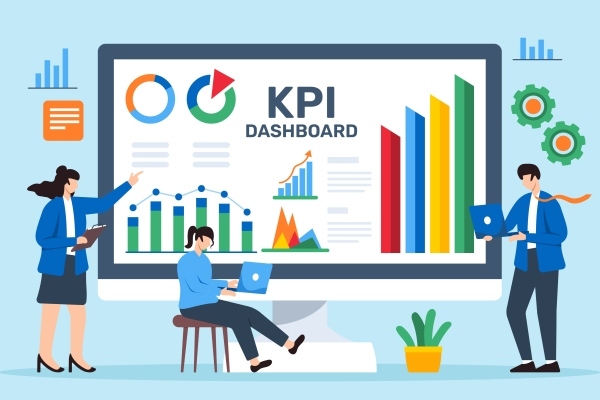
How to Improve Bounce Rate on your Website
What Is Bounce Rate?
Bounce rate is the percentage of visitors to a website who leave after only viewing one landing page. It’s one of the most important metrics because it can indicate how well your website is serving its visitors. Low bounce rates are generally a good sign, while high bounce rates can indicate that your website isn’t meeting your visitors’ expectations of needs.
How is bounce rate calculated?
Bounce rate is calculated by tracking how many people visit a single page on your website and then leave without visiting any other pages. These are called landing pages and are often the most important pages on your website. The most visited landing page is usually your homepage and it’s important to understand your bounce rate for all of your landing pages.
This measurement is used to determine how effective your website is at keeping people engaged. A high bounce rate means that people are not finding what they are looking for on your website, which can be a sign that your website needs more content or that your content is not relevant to what people are searching for.
A low bounce rate means that people are staying on your website and looking at multiple pages by clicking on internal links or menu items, which is a good sign that they are finding your content useful.
There are a number of factors that can influence your bounce rate, including the design of your website, how it appears on mobile devices, the quality of your content, landing page structure, internal links and where they are placed and the things that your website pages are ranking for. If you want to reduce your bounce rate, it is important to make sure that your website is easy to use and navigate, and that your content is relevant and interesting to your target audience. We will look at the individual actions you can take to improve bounce rate a little later on.
What is a Good and Bad Bounce Rate?
A good bounce rate is typically considered to be anything below 50%. This means that less than half of the people who visit your website are leaving without looking at any other pages. If your bounce rate is higher than 50%, it means that you need to make some changes to your website or content to keep people engaged.
What does a high bounce rate mean?
A high bounce rate means that a large percentage of people who visit your website leave without taking any action, such as clicking on a link, submitting a form, or buying a product.
A high bounce rate can be caused by a number of factors, such as a slow loading website, irrelevant content, or an unclear call to action. If you have a high bounce rate, it’s important to take action to improve your website so that more visitors stay on your site and take the desired action.
What does a low bounce rate mean?
A low bounce rate means that a small percentage of people who visit your website leave without taking any action. A low bounce rate is generally a good sign, as it indicates that people are finding what they’re looking for on your website and are taking the desired action.
There are a number of factors that can affect your bounce rate, so if you have a low bounce rate, it’s important to keep an eye on it and take action if necessary.
So, is a high bounce rate always bad?
High Bounce Rates aren’t always bad. In fact, a high bounce rate can actually be a good thing in some cases. If people are landing on your website and immediately leaving, it can mean that they’re finding what they’re looking for on your landing page. They don’t need to stick around because they’ve already found what they need. Here are some instances where high bounce rate isn’t a bad thing:
- People are looking for your contact details: If people are landing on your website and immediately looking for your contact details, it’s a good thing. They’re interested in what you have to offer, and they want to get in touch with you.
- People are landing on your blog: If people are landing on your blog, it means they’re interested in what you have to say. They’re not necessarily looking for anything else on your website.
- People are landing on your product pages: If people are landing on your product pages, it means they’re interested in what you have to offer. They may not be ready to buy yet, but they could be considering it.
So, trying to achieve a 0% bounce rate is pretty much impossible and unrealistic. So, you need to analyse bounce rate with these things in mind.
What is a good Bounce rate?
A good bounce rate is considered to be anything under 45%, between 45% and 55% would be seen as average, and anything over this high.
Different types of websites will achieve different bounce rates because of the industry they are in. For example, a magazine website will have a much higher bounce than a local business offering plumbing services because people are less likely to click on internal links.
You can look at your bounce rate in google analytics, it will show bounce rate across the whole website and also on a page by page bases which can be good for analysing landing pages. If you don’t have google analytics installed, then it is definitely something you should consider.
If you think the bounce rate for your website is higher than you think it should be, then take a look at the next section to see how you can reduce your bounce rate.
How to Reduce your Bounce Rate
If you think your current website has a higher than expected bounce rate, there are some things you can do to improve it. The most common areas that may be the cause of high bounce rates are:
- Poor navigation and menu structure
- Slow page speed or site load speed
- Pop-ups and annoying distractions
- No CTA’s on the page
- It not being obviously what you do when someone lands on your website
- Title tags and meta descriptions that aren’t representative of the page
- Poor content
- Pages that don’t appear mobile-friendly on different mobile devices
It’s also worth making sure that you have Google Analytics properly installed to make sure that it is measuring bounce rate correctly. There are other technical issues that can get in the way, such as the use of java script forms etc. which can incorrectly record bounce rates, so it is worth investigating further if some of the things google analytics is showing doesn’t seem right.
What to Focus on to Reduce Your Bounce Rate?
The first thing I would do is log into Google Analytics and see if you have a site wide issue or if you have high bounce rates on specific pages only. Then you can target those areas that will make the most difference to your website.
How to Improve navigation and menu structure on a website
There are a few ways to improve navigation and menu structure on a website. One way to improve navigation is to make sure that you have a clear and simple menu and that all the links on your menu are active and lead to the correct page. Make your menus logical, don’t try and add every page to a menu though. If it’s too long it can look overwhelming.
How to make your website faster to reduce bounce rate
One way is to use a content delivery network (CDN). A CDN will help to speed up the loading of your website by caching your content in servers around the world. This will mean that your visitors will be able to load your website faster, as the content will be closer to them.
Another way to make your website faster is to optimize your images. This means reducing the file size of your images so that they take up less space and load quicker. You can do this using an image editing software such as Photoshop or GIMP.
Finally, you can also make your website faster by optimizing your code. This means making sure that your code is clean and well-organized. This will make it easier for browsers to interpret and load your website quickly. You can do this by using a code validator such as the W3C Markup Validation Service.
By following these tips, you can make your website faster and improve the user experience for your visitors. Sometimes you may find that you only need to work on specific landing pages that might be slower to load.
Why you should get rid of most of your pop-ups
There are a few reasons you should get rid of most of your pop-ups.
First and foremost, pop-ups can be incredibly annoying. They often block your view of the content you’re trying to read or watch and can make it difficult to use the internet effectively. Additionally, many pop-ups can slow down your site speed.
By removing those that aren’t needed you can help to reduce your bounce rate across the whole website.
Why CTAs are so important to reduce bounce rate
CTAs, or Call to Actions, are so important on your website because they are one of the main ways you can convert a website visitor into a customer. From a bounce rate point of view, they help people know what to do next, if you don’t entice someone to take further action, they may well land on a page, find the information they need and then leave without clicking on any internal links. This will be recorded as a bounce in Google Analytics.
There are a few things to keep in mind when creating a CTA:
- Make sure your CTA is visible. Place it in a prominent location on your website where visitors will see it.
- Use strong language that encourages visitors to take action. For example, instead of using the word “submit,” try “Get Started Now.”
- Use different CTAs for different stages of the buying process. For example, if you’re selling a product, you might have a CTA that says “Buy Now” on the product page and a CTA that says “Add to Cart” on the shopping cart page.
- Use tracking code to measure the performance of your CTAs in Google Analytics. This will give you insights into which CTAs are working and which ones need to be improved.
- Test different versions of your CTAs to see what works best. Try different colours, sizes, and positions on your website to see what gets the most clicks.
Following these tips will help you create effective CTAs that convert website visitors into customers and help to keep site visitors on your website for longer, hence improving your bounce rate.
Make it obvious what you do
If a site visitor lands on your website and it isn’t immediately obvious what you do, they are very likely to bounce. Use images, words and titles that make it clear which products or services you provide. A poor user experience is a sure fire way to encourage a single page visit and create a bounce.
Your most important information should go above the fold, which is the area of the website visible without scrolling. This is where a site visitor will form their first impressions, so make sure it’s a good one!
To avoid a visitor bounce, ensure your page loads quickly that your content matches user intent and your web page clearly outlines what you do, how you can solve their problem and where they need to go next. By providing relevant content clearly, with a fast load time and call to action you will greatly improve our website bounce rate.
Title and Meta Data
If someone clicks on your website because you say in your meta description that you do something, you’d better do it. There is nothing more frustrating than landing on a website and feeling like you’ve been misled in some way.
Make sure your title accurately reflects the subject matter of your page, and make sure your meta descriptions are clear and concise. Neither should try to stuff keywords in where they don’t belong – if your title is accurate and your meta description is well written, you’ll naturally gain a better click through rate and reduce the likelihood that visitors bounce off to another site.
Why you need good quality relevant content on your website
If you want to have a successful website, it’s essential that you produce high-quality content. This will not only help keep your visitors engaged, but it will also decrease bounce rate. If someone likes what they see when they visit your website, they are far more likely to click through to other pages and stay for a while.
This will only happen if you have good quality content on your website.
Mobile Usability
From the website’s point of view, mobile friendliness is important because it helps to improve bounce rates. When a website isn’t designed for mobile devices, users will often find it difficult to navigate. This can cause them to leave the website without taking any action. By making your website mobile-friendly, you can make it easier for users to stay on your site and take the actions you want them to.
There are a few things you can do to make your website more mobile-friendly:
- Use a responsive design: This is a type of web design that allows your website to adapt to the device it’s being viewed on. This means that your website will look and work well on any type of device, whether it’s a smartphone, tablet, or desktop computer. A site that performs just as well on a mobile will reduce bounce rates and increase conversions.
- Use large font sizes: When users are viewing your website on a small screen, they need to be able to read the content easily. Use large font sizes so that your text is easy to read.
- Use short paragraphs: Again, this is for the benefit of mobile users. When people are reading on a small screen, they don’t want to scroll through long blocks of text. Keep your paragraphs short and to the point.
- Use calls to action: Make it easy for users to take the actions you want them to by using calls to action. For example, if you want them to sign up for your newsletter, include a link or button that they can click on.
- Optimize your images: When you’re adding images to your website, make sure to optimize them for web use. This means choosing the right file format and compressing your images so that they load quickly.
By following these tips, you can make your website more mobile-friendly and improve your mobile usability.
Need Help with Your Bounce Rate?
If you are still unsure where to start or are a little overwhelmed by the amount of work or technical knowledge required. We can help take this off of your hands. Having worked on improving bounce rate for a large number of websites and with over 15 years of experience, we can help take all the stress away and handle it all for you.
We will look in-depth at your bounce rate, search rankings, discover broken links, investigate slow page load time and improve site speed, look at your call to action strategy, investigate a single page session, and audit your overall digital marketing activity.
Once the research is done, we can work with you to understand your goals and then come up with a plan to reduce bounce rate and ensure your website provides a positive user experience for site visitors.
Pricing depends on the level of work required. But if you think this is something that might interest you, then please get in touch today and we can discuss your requirements in more detail.








